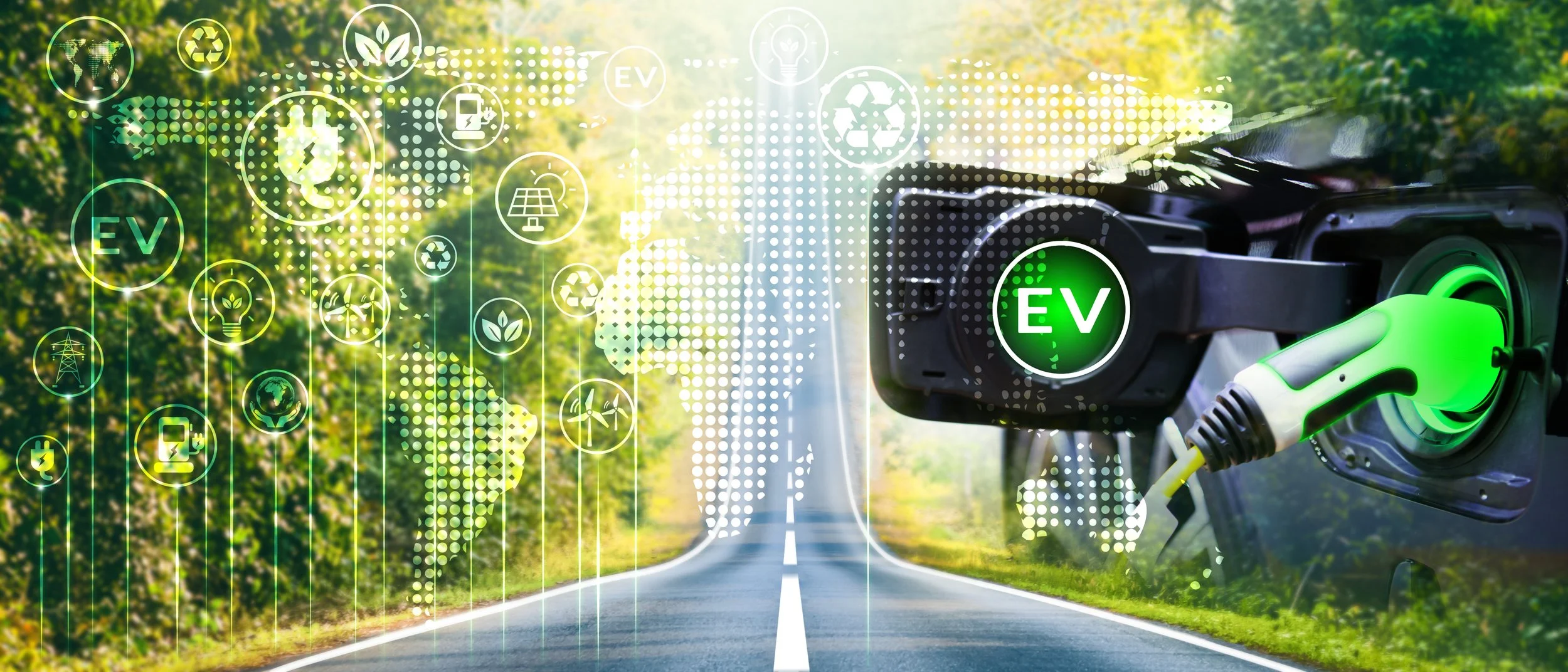How do EVs compare to typical gas or diesel-powered vehicles?
Gas Mileage
AEVs do not receive a direct gas mileage rating compared to their ICE counterparts. To compare the fuel efficiencies of AEVs and ICEs, the EPA developed the miles per gallon equivalent MPGe. Many ICE vehicles achieve 20-35 MPG, whereas HEVs can achieve up to 55 MPG. Many commercially available AEVs have MPGe ratings of more than 100.
Cost of Ownership (Purchase, annual costs, etc.)
While EVs are frequently more expensive than their ICE counterparts, EV ownership costs are generally much lower. They are less expensive to fuel because electricity is less expensive than gasoline. They are also less expensive to maintain because they do not require oil changes and have fewer moving parts.
Batteries are covered by a federally mandated 8-year/100,000-mile warranty.
According to the National Renewable Energy Laboratory, modern batteries can last 12-15 years in moderate climates and 8-12 years in more extreme climates.
Buying An EV
As of January 2023, 48 brands are selling EVs in the US.
Over 600,000 PHEVs and AEVs were sold in the United States in 2021.
An increase in EV sales throughout 2021 brought the total number of EVs on the road in the State of New York to nearly 130,000.
Incentive Programs
The recent passage of the Inflation Reduction Act updated the Federal tax incentives for buying an electric vehicle. A federal tax credit ranging from $2,500 to $7,500 is available for purchasing an electric vehicle, changes based on the percentage of the vehicle and its components made in America. For further information, please visit the IRS website.
Many states also offer tax incentives or rebates for buying an EV. For example, NY provides up to a $2,000 rebate for new EV purchases or leases.
Driving Range of EVs
How far can I drive?
Many BEVs have a range of over 200 miles, with some over 300 miles with a full charge.
PHEVs mostly have 15-50 miles of electric range before switching to gasoline fuel and operating as a traditional hybrid.
What happens if I run out of power?
Some EVs have a low-power mode that will initiate when the battery is nearly depleted. This mode limits power and acceleration but is a way to keep the car moving until it reaches a charge point or a safe roadside location while you wait for assistance.
Some roadside assistance companies have mobile charging options; otherwise, the vehicle may be towed like any other vehicle.
I’ve heard EVs don’t work as well in the winter. Is this true?
In harsh winter conditions, EV fuel economy can drop up to 39%, and the range can drop by up to 41%. Most of this energy is used to heat the cabin and keep the battery warm. When the cabin heater is not used, EV fuel economy is 8% lower, with a range of about 12% lower.
https://www.energy.gov/energysaver/fuel-economy-cold-weather
Are EVs more or less safe than internal combustion engine cars?
Fire and accidents – BEVs and ICE vehicles have different potential safety and fire risks. Battery fires are more likely in BEVs because of thermal runaway (a chain reaction in which a heat-generating reaction feeds upon itself and becomes uncontrollable), short circuits, or other battery failures. However, the risk of a battery fire is low. To reduce the risk of battery fires, EV manufacturers have implemented safety measures such as battery enclosures, thermal management systems, and automatic safety shutdowns. Furthermore, as the sales of electric and hybrid vehicles increase, emergency responders and firefighters have continued to modify tactics and improve training for safe and effective vehicle extrication, rescue, and fire suppression to respond to the unique characteristics of electric-powered vehicles. On the other hand, ICE vehicles have a higher risk of engine fires, which can occur due to fuel leaks, oil leaks, and electrical system malfunctions. These fires can spread quickly and are difficult to put out. The National Transportation Safety Board (NTSB) reports that ICE vehicles have a higher rate of fires than BEVs.
Weight – Electric vehicles (EVs) are typically slightly heavier than internal combustion engine (ICE) vehicles of comparable size and class. EVs need large batteries to store energy and power the electric motor, whereas ICE vehicles have smaller fuel tanks and engines. However, it is important to note that the weight difference between EVs and ICE vehicles varies depending on the models being compared. Some smaller EVs, for example, may be lighter than larger ICE vehicles, and vice versa. Furthermore, newer EV models incorporate lighter materials and more efficient battery technology, which may help to reduce the weight difference between EVs and ICE vehicles in the future.
Noise - BEVs are significantly quieter than vehicles powered by internal combustion engines (ICEs). This is because EVs use electric motors to power the wheels, producing very little noise compared to the loud and complex engines and exhaust systems in ICE vehicles. The absence of engine noise in EVs can have positive and negative consequences. On the plus side, it can help to reduce noise pollution in cities and make driving more enjoyable for passengers. However, on the downside, it can be dangerous for pedestrians and cyclists who may not hear an EV approaching, especially at low speeds. The National Highway Traffic Safety Administration has issued regulations requiring all EVs and hybrid vehicles to make audible noises at low speeds to address this safety concern.
Are EVs more environmentally friendly than internal combustion engine cars?
Yes! AEVs emit no direct emissions (no tailpipe emissions). While the method of electricity generation used to charge a vehicle will affect the EV's carbon footprint, the EPA estimates that driving an electric vehicle on the given general US Electricity Mix will produce approximately 70% fewer emissions than driving a gas-powered car. This is especially true in the GBNRTC region, where power is 'greener' than the national average. The EPA estimates that driving an EV versus a gas-powered vehicle reduces emissions by 93% in the GBNRTC region.


